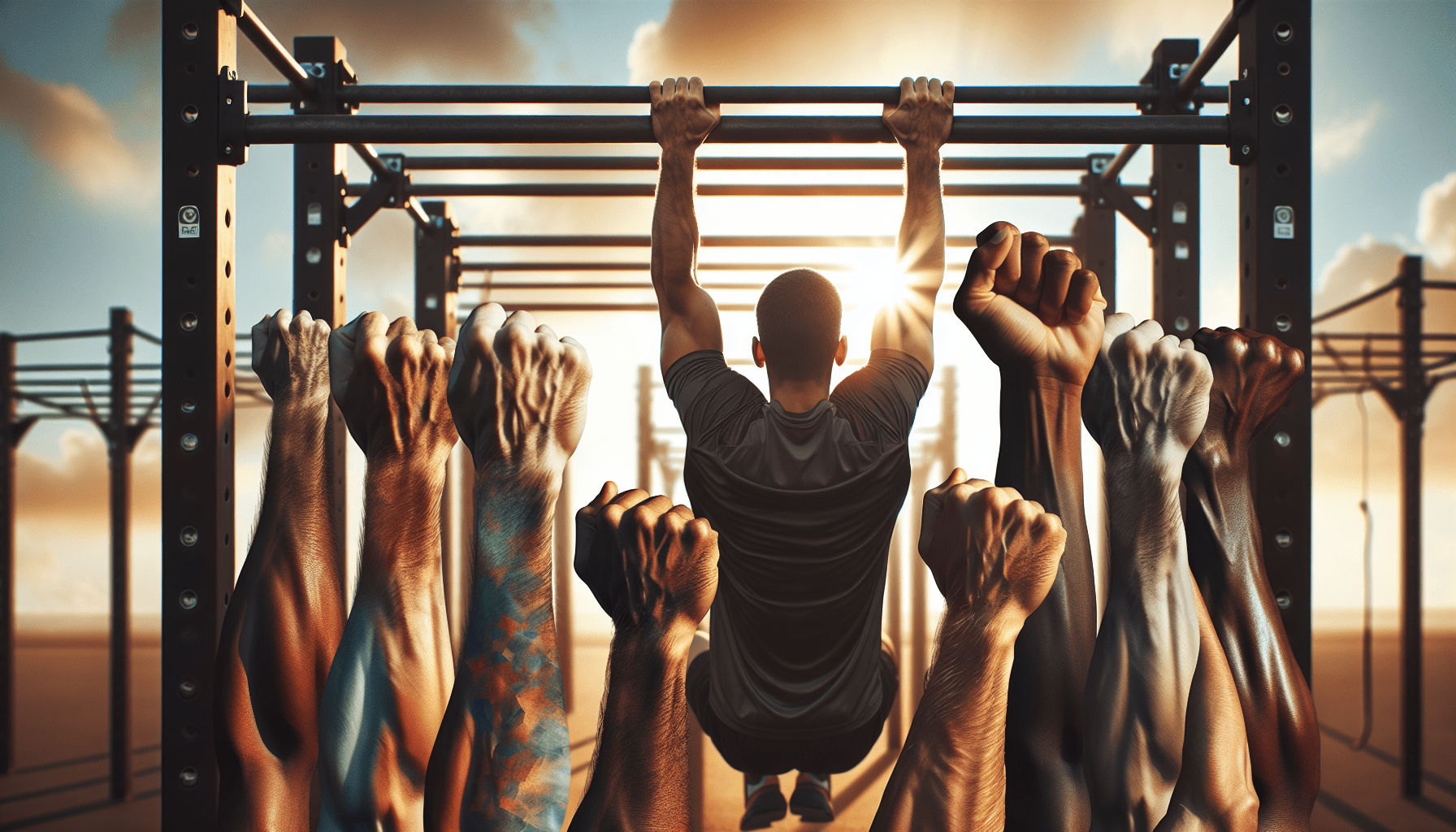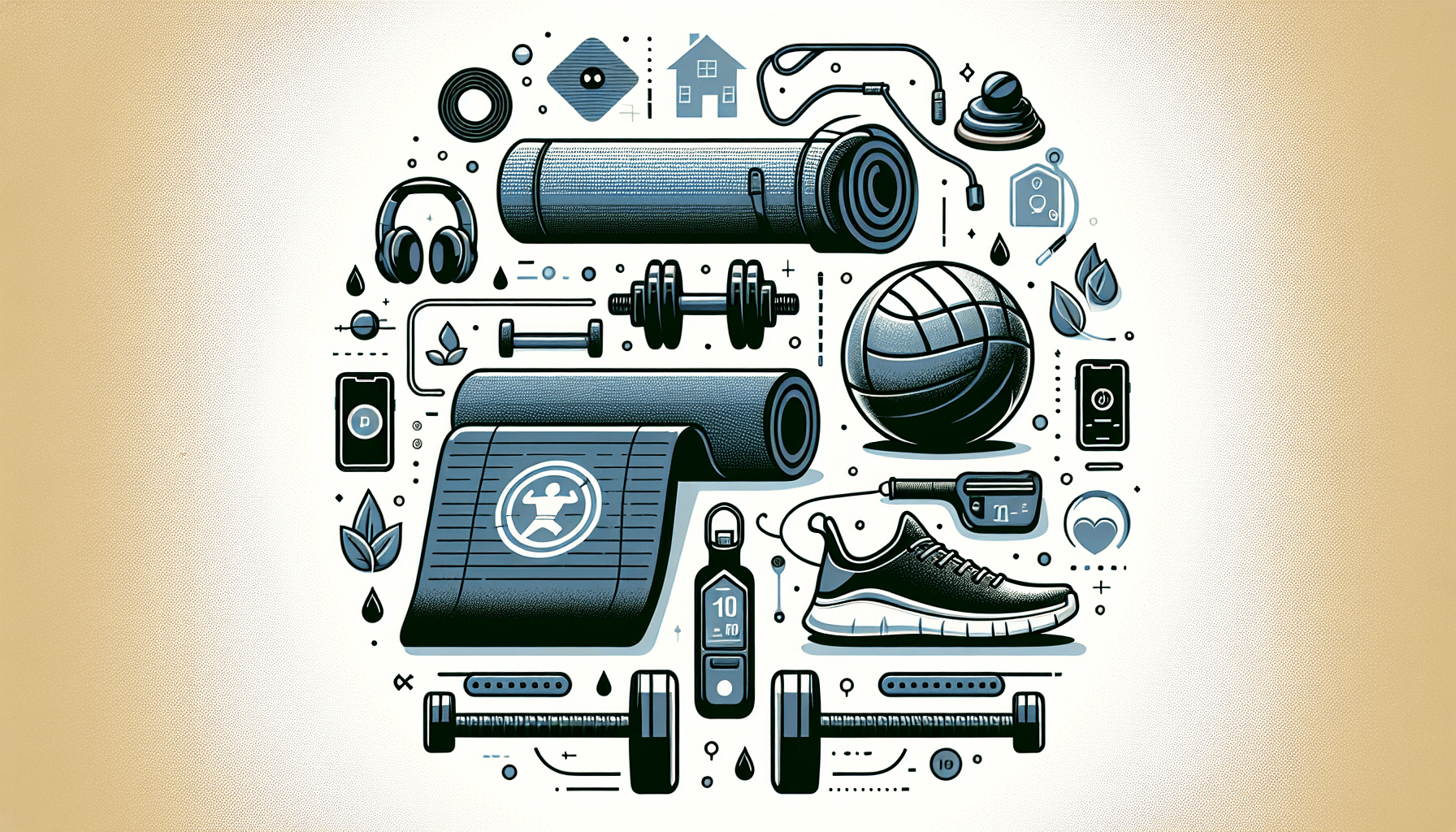Are you new to calisthenics and looking for a simple yet effective way to kickstart your fitness journey? Look no further! In our article, “Beginner Calisthenics Routines,” we’ve got you covered with a variety of beginner-friendly exercises that will help you build strength, improve flexibility, and increase overall fitness. Whether you’re aiming to tone your muscles, lose weight, or simply improve your physical well-being, these routines are perfect for you. Get ready to discover a whole new world of bodyweight exercises that will push your limits and leave you feeling accomplished. Are you ready to take the first step towards a healthier and fitter lifestyle? Let’s dive right in!
Warm-Up Routine
Before diving into your workout, it’s essential to warm up your body to prepare it for the upcoming exercises. A warm-up routine helps elevate your heart rate, increase blood circulation, and loosen up your joints and muscles. Here are some key components of an effective warm-up routine:
Joint Mobility Exercises
Start by performing joint mobility exercises to improve the range of motion in your joints. This includes gentle neck rotations, shoulder circles, wrist circles, hip rotations, knee circles, and ankle rotations. These exercises help lubricate the joints, enhance flexibility, and reduce the risk of injury during your workout.
Dynamic Stretching
Next, incorporate dynamic stretching into your warm-up routine. Dynamic stretches involve moving your body through a full range of motion, gently stretching and activating the muscles. Examples of dynamic stretches include arm circles, leg swings, walking lunges, high knees, and torso twists. These stretches help improve flexibility, increase blood flow, and prepare the muscles for the upcoming workout.
Light Cardiovascular Exercise
Finally, engage in some light cardiovascular exercise, such as brisk walking, jogging in place, or jumping jacks. This helps raise your heart rate and body temperature, further increases blood flow, and primes your cardiovascular system for the workout ahead. Aim for 5-10 minutes of light cardio to complete your warm-up routine.
Upper Body Routine
Now that you’re warmed up, it’s time to focus on targeting your upper body muscles. The following exercises will help you build strength, tone your muscles, and improve your overall upper body fitness.
Push-Ups
Push-ups are an excellent exercise for targeting your chest, shoulders, triceps, and core muscles. Start in a high plank position with your hands slightly wider than shoulder-width apart. Lower your body until your chest is close to the ground, then push back up to the starting position. If you’re new to push-ups, you can modify the exercise by performing them on your knees or against a wall. Aim for 2-3 sets of 10-15 reps.
Pull-Ups
Pull-ups are a challenging but highly effective exercise for building upper body and back strength. If you have access to a pull-up bar, grasp it with an overhand grip and hang with your arms fully extended. Pull your body up until your chin is above the bar, then lower yourself back down with control. If you’re unable to do full pull-ups yet, you can start with assisted variations using resistance bands or perform inverted rows using a suspension trainer. Aim for 2-3 sets of 8-12 reps.
Dips
Dips primarily target your triceps, chest, and shoulders, helping you develop upper body strength and stability. Find parallel bars or use two sturdy elevated surfaces, such as chairs or steps. Place your hands on the bars or surfaces with your arms extended, then lower your body by bending your elbows and keeping them close to your sides. Push yourself back up to the starting position. If dips are too challenging initially, you can perform bench dips using a stable bench or step instead. Aim for 2-3 sets of 8-12 reps.
Plank
Planks are a fantastic exercise for developing core strength and stability while engaging multiple muscles throughout your body. Get into a push-up position, but instead of resting on your hands, lower yourself onto your forearms. Keep your body straight and hold this position for as long as you can, aiming for 30-60 seconds. As you progress, you can increase the duration of your planks or try more challenging variations, such as side planks or plank jacks.
Lower Body Routine
Don’t neglect your lower body when it comes to strength and fitness. Strong legs and glutes are essential for stability, balance, and overall functional movement. Incorporate the following exercises into your routine to target your lower body muscles effectively.
Squats
Squats are a fundamental lower body exercise that targets the quadriceps, hamstrings, glutes, and even the core. Begin by standing with your feet shoulder-width apart. Lower your body down as if you’re about to sit in a chair, keeping your back straight and your weight in your heels. Return to the starting position by pushing through your heels and engaging your leg muscles. Aim for 2-3 sets of 10-15 reps.
Lunges
Lunges are excellent for working the quadriceps, hamstrings, glutes, and hip muscles. Start by standing with your feet hip-width apart. Take a big step forward with one foot and lower your body, bending both knees to approximately 90 degrees. Push off with your front foot to return to the starting position, then repeat on the other side. Alternatively, you can perform reverse lunges by stepping backward instead of forward. Aim for 2-3 sets of 10-12 reps on each leg.
Glute Bridges
Glute bridges primarily target the gluteal muscles, but they also engage the hamstrings and lower back. Lie on your back with your knees bent and your feet hip-width apart, flat on the ground. Push through your heels, lift your hips off the ground, and squeeze your glutes at the top. Lower your hips back down to the starting position and repeat. To increase the difficulty, you can try single-leg glute bridges. Aim for 2-3 sets of 12-15 reps.
Calf Raises
Calf raises are great for strengthening the calf muscles, which are essential for ankle stability and balance. Stand with your feet hip-width apart and your hands resting on a wall or a sturdy surface for support. Lift your heels off the ground, rising onto your toes as high as possible. Lower your heels back down, feeling a stretch in the calf muscles, then repeat. To target different parts of the calves, you can perform calf raises with your toes pointed inward or outward. Aim for 2-3 sets of 15-20 reps.
Core Routine
A strong core is vital for maintaining stability, preventing injuries, and improving overall fitness. Incorporate the following core exercises into your routine to strengthen your abdominal muscles and improve core stability.
Crunches
Crunches are a classic exercise that targets the rectus abdominis, commonly referred to as the “six-pack” muscles. Lie on your back with your knees bent and your feet flat on the ground. Place your hands behind your head, engage your abdominal muscles, and lift your upper body off the ground. Lower yourself back down with control and repeat. Aim for 2-3 sets of 15-20 reps.
Russian Twists
Russian twists engage the oblique muscles, which are responsible for twisting and rotating movements. Sit on the ground with your knees bent and your feet lifted slightly off the ground. Lean back slightly while keeping your back straight and your core engaged. With a medicine ball, dumbbell, or your hands clasped together, rotate your torso from side to side. Aim for 2-3 sets of 10-12 reps on each side.
Leg Raises
Leg raises primarily target the lower abdominal muscles, but they also engage the hip flexors and hip muscles. Lie on your back with your legs extended. Keeping your legs straight, lift them off the ground as high as you can, then lower them back down with control. For a greater challenge, you can lift your legs to a 90-degree angle or perform hanging leg raises from a pull-up bar. Aim for 2-3 sets of 10-15 reps.
Plank Variations
Plank variations not only strengthen the core muscles but also engage many other muscles throughout the body. In addition to the standard forearm plank mentioned earlier, you can try side planks, where you rest on one forearm and stack your feet or lift your top leg. You can also attempt plank up-downs, where you transition from a plank position onto your hands, then back down onto your forearms. Aim to hold each plank variation for 30-60 seconds and perform 2-3 sets.
Full Body Routine
For a comprehensive workout that targets your entire body, incorporating full-body exercises is key. The following exercises engage multiple muscle groups simultaneously, providing a challenging and efficient workout.
Burpees
Burpees are a demanding but highly rewarding exercise that targets your arms, chest, legs, and core muscles all at once. Begin in a standing position, then squat down and place your hands on the ground in front of you. Kick your feet back to a high plank position, perform a push-up, then jump your feet back to the squat position. From there, explosively jump up, reaching your hands overhead. Aim for 2-3 sets of 8-12 reps.
Mountain Climbers
Mountain climbers are an excellent cardio and full-body exercise that engages your upper body, core, and leg muscles. Start in a push-up position, with your body straight and your hands directly beneath your shoulders. Alternate bringing your knees towards your chest in a running motion, driving each knee forward as far as possible. Aim for 2-3 sets of 20-30 seconds.
Jumping Jacks
Jumping jacks are a classic exercise that gets your heart rate up and engages your legs, arms, and core muscles. Stand tall with your feet together and your arms at your sides. Jump your feet out to the sides while simultaneously raising your arms above your head. Jump back to the starting position and repeat. Aim for 2-3 sets of 20-30 reps.
Bear Crawls
Bear crawls are a unique exercise that targets your shoulders, arms, core, and leg muscles while also challenging your coordination and stability. Start in a high plank position, then crawl forward by moving your opposite arm and leg together, followed by the other side. Keep your core engaged and strive for a smooth, controlled movement. Aim for 2-3 sets of 20-30 seconds.
Strength Building Routine
To continue progressing and building strength, it’s important to incorporate certain principles into your routine. By following these guidelines, you’ll maximize your strength gains and avoid hitting plateaus.
Progressive Overload
Progressive overload refers to gradually increasing the demands placed on your muscles over time. This can be achieved by manipulating variables such as weight, repetitions, sets, or intensity. Continuously challenging your muscles by gradually increasing the workload prompts them to adapt and grow stronger.
Variety of Exercise Movements
To prevent boredom and continue making progress, it’s important to include a variety of exercise movements in your routine. This ensures that different muscles are targeted, and your body doesn’t adapt to the same repetitive movements. Incorporate exercises that work different muscle groups and use different movement patterns to keep your workouts fresh and engaging.
Focus on Form and Technique
No matter how challenging the exercise, it’s crucial to prioritize proper form and technique. Maintaining correct form not only maximizes the effectiveness of the exercise but also reduces the risk of injury. Take the time to learn proper technique for each exercise and practice it consistently. If unsure about proper form, seek guidance from a qualified fitness professional.
Flexibility Routine
Flexibility plays a crucial role in overall fitness and helps reduce the risk of injury. Incorporating a flexibility routine into your weekly workouts can improve joint mobility, muscular function, and overall movement efficiency. The following components should be included in your flexibility routine.
Dynamic Stretching
Dynamic stretching involves taking your body through a full range of motion, using controlled movements to warm up and stretch your muscles. Examples include leg swings, arm circles, walking lunges, and trunk rotations. Dynamic stretching is ideal for improving flexibility and preparing your muscles for more intense physical activity.
Static Stretching
Static stretching involves holding a stretch and elongating the muscle for an extended period. After your workout or on rest days, include static stretches that target major muscle groups. Hold each stretch for 15-30 seconds without bouncing or jerking. Focus on areas that tend to be tight, such as hamstrings, quadriceps, hip flexors, chest, and shoulders.
Yoga or Pilates
Incorporating yoga or Pilates into your routine can help improve flexibility, balance, and mental focus. These practices combine strength, flexibility, and mindfulness, making them beneficial for both the body and mind. Consider taking a yoga or Pilates class or following online tutorials to enhance your flexibility and overall well-being.
Endurance Routine
Endurance is an essential component of overall fitness, enabling you to sustain physical activity for prolonged periods. Incorporate the following endurance training methods into your routine to enhance your cardiovascular fitness and stamina.
High-Intensity Interval Training (HIIT)
HIIT involves alternating between high-intensity exercise and brief recovery periods. This type of training helps improve cardiovascular health, burn calories, and boost metabolism. Choose exercises that engage multiple muscle groups and get your heart rate up, such as burpees, jumping jacks, mountain climbers, or sprint intervals. Perform each exercise at a high intensity for 30-60 seconds, followed by a 15-30 second active recovery period. Repeat for several rounds.
Circuit Training
Circuit training involves performing a series of exercises back-to-back, targeting different muscle groups with little to no rest in between. This type of training improves muscular endurance and cardiovascular fitness. Choose exercises that work different muscle groups and transition smoothly between them. Perform each exercise for a predetermined amount of time or a certain number of repetitions before moving on to the next one. Complete the circuit for 2-3 rounds.
Long Duration Aerobic Exercises
To build endurance for longer-lasting activities, such as running, cycling, or swimming, incorporate long duration aerobic exercises into your routine. Choose an activity you enjoy and can sustain for an extended period at a moderate intensity. Aim to gradually increase the duration of your workouts over time, challenging yourself to go a little farther or for a little longer with each session.
Rest and Recovery
Rest and recovery are crucial aspects of any fitness routine. Giving your body time to recuperate allows your muscles to repair and grow, reducing the risk of overuse injuries and preventing burnout. Incorporate the following practices into your routine to optimize rest and recovery.
Active Rest Days
Schedule regular rest days throughout the week to allow your body to recover. On these days, engage in light physical activities such as walking or gentle stretching to promote blood flow, reduce muscle soreness, and enhance recovery. Avoid intense workouts on rest days to give your body the opportunity to recharge.
Proper Sleep and Nutrition
Getting adequate sleep and maintaining a balanced, nutritious diet are essential for optimal recovery. Aim for 7-9 hours of quality sleep each night to support muscle growth and repair. Fuel your body with nutrient-dense foods, including lean proteins, complex carbohydrates, fruits, vegetables, and healthy fats. Hydrate adequately to support overall health and recovery.
Foam Rolling and Stretching
Incorporate foam rolling and stretching into your routine to reduce muscle tension, release tightness, and enhance flexibility. Foam rolling targets myofascial release, loosening knots and trigger points in the muscle tissue. Stretching helps improve flexibility and restore muscle length. Perform these activities after your workouts or on rest days to aid in recovery and prevent muscular imbalances.
Progression and Tracking
To ensure consistent progress and maintain motivation, it’s important to set goals, track your progress, and gradually increase the difficulty of your workouts.
Setting Goal Targets
Set realistic and achievable goals to work towards. Whether it’s increasing the number of repetitions or sets, improving form and technique, or reaching a particular level of strength or endurance, having specific goals gives you something to strive for and helps you stay focused and motivated throughout your fitness journey.
Tracking Progress and Reps
Keep a workout journal or use a fitness-tracking app to record your exercises, reps, and sets. Monitoring your progress allows you to see how far you’ve come and helps plan your future workouts. It also helps identify any areas that need improvement and serves as a reminder of your achievements.
Gradually Increasing Difficulty
As you become stronger and more comfortable with your workouts, gradually increase the difficulty to continue challenging your muscles and promoting progress. Increase the weight, intensity, repetitions, or sets of exercises over time. However, be mindful of your body’s response and avoid rushing the process – gradual and sustainable progress is key to avoiding injuries and maintaining long-term success.
Incorporating these routines into your fitness journey will help you establish a solid foundation, improve strength, flexibility, endurance, and overall fitness. Remember to start at a level that suits your current abilities and gradually progress as you become more comfortable. Stay consistent, listen to your body, and enjoy the journey towards a healthier and fitter you!




